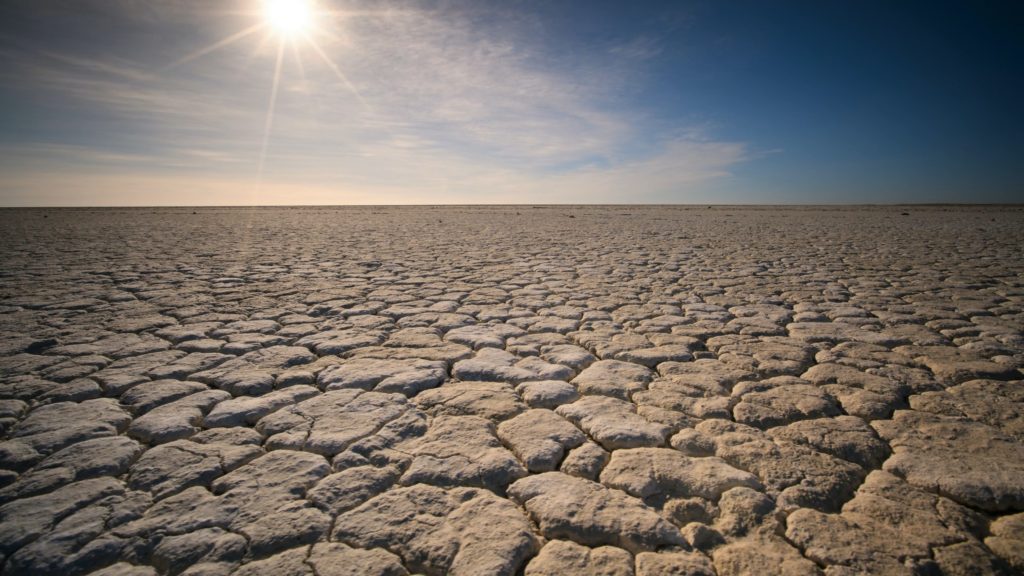In recent years, droughts have had a significant impact on various regions within the European Union. However, accurately assessing and quantifying the risks and consequences of droughts has been a complex challenge due to the multifaceted nature of these events. Droughts do not lend themselves to easy definition or prediction; they develop gradually, can occur outside of typical seasonal patterns, and may persist for extended periods. Thanks to an innovative approach that combines expert knowledge with machine learning, the first European Drought Risk Atlas now provides a detailed and granular perspective on the risks posed by droughts to both our societies and ecosystems, as well as the underlying factors contributing to these risks. Iliana Ivanova, Commissioner for Innovation, Research, Culture, Education, and Youth, who is responsible for the Joint Research Centre (JRC), stated: “Droughts impact all EU regions, affecting human life, ecosystems, agriculture, employment, and transportation. Mapping drought risks is crucial for identifying vulnerable areas, as well as for anticipating and understanding droughts. The Commission’s Joint Research Centre plays a significant role in safeguarding citizens and our environment through its continuous scientific and analytical contributions.” The Atlas reveals that current levels of drought risk are considerably high, resulting in economic and environmental threats in terms of average annual losses. The Atlas is designed to support the development and implementation of policies and actions for drought management and adaptation throughout the EU.

Foto di Fiona Smallwood su Unsplash
According to the Atlas, the increased frequency of droughts is narrowing the window for recovery, leading to more severe consequences. Climate change has already led to more intense and prolonged meteorological droughts in southern Europe, and it is expected that nearly all of the EU will experience a greater impact from drought events with further global warming.
The Atlas is complemented by the European Drought Impacts Database, which contains data on drought impacts from 1977 to 2022, and will be made available to users at a later stage. Both the Atlas and the database have been developed by the JRC and the European Drought Observatory for Resilience and Adaptation (EDORA) partners, and they will be integrated into the Copernicus European Drought Observatory operated by the JRC.
A Novel Approach to Assess Drought
The Atlas employs an innovative approach to address the intricate characteristics of drought hazards, risks, and impacts. JRC and EDORA partners utilized both expert knowledge and machine learning techniques to assess the risks for various sectors and systems within the EU under current conditions and projected climate scenarios of +1.5°C, +2°C, +3°C compared to the pre-industrial period. The assessment focuses on five sectors and systems: agricultural crop systems, public water supply, energy production, river transportation, and ecosystems. The analysis integrates findings from the literature, expert consultations, and data-driven assessments for the 27 EU countries to assess the risks associated with drought.

Foto di Oleksandr Sushko su Unsplash
Risks of Drought Across Regions
The Mediterranean region is at the highest risk due to a clear trend of increasing dry conditions caused by global warming. In particular, the Iberian Peninsula faces a higher drought risk under both current and projected climate conditions. Northern regions may experience more diverse and varying effects, including wetter yet more variable weather conditions, and an expected increase in the frequency and intensity of extremes. Some sectors, such as agriculture and hydropower, are expected to have a lower drought risk, particularly in the Baltics. Eastern and Western Europe may experience more complex effects due to the interplay between drying and wetting dynamics and precipitation variability. Romania already experiences relatively high drought risks, with projections indicating an increased risk across several sectors. In France, the higher drought risk in the south is expected to extend to the north as warming levels rise. Additionally, France is particularly vulnerable in terms of both nuclear and hydropower, with risks projected to significantly increase.
Mitigating Drought Risks through Adaptation
Precision agriculture and water resource diversification policies can be integrated into sustainable adaptation strategies in the agricultural sector to bring benefits. Policies like the EU Water Reuse Regulation, in effect since June 2023, can promote water resource diversification, particularly in coastal areas where water is often wasted. For public water supply, adaptation efforts must focus on both water quality and quantity, with the recast of the EU Drinking Water Directive playing a crucial role, thanks to updated water quality standards. The implementation of dry or hybrid cooling systems can reduce the vulnerability of the energy system. For river transportation, a promising potential adaptation strategy involves adapting vessels to low-flow conditions and managing supply stocks. In forest ecosystems, management practices such as shorter rotation cycles and the appropriate mixing of tree species can enhance resilience to drought. Buffer zones around designated ecosystems can aid in the adaptation of freshwater ecosystems.
Background
Assessing the impact of drought on our society and ecosystems is essential for understanding the likelihood of these impacts occurring in the near and distant future. This understanding is critical for effectively reducing, managing, and adapting to the consequences of future drought events. Over the past few decades, the EU has experienced multiple drought events, with the European Drought Observatory (EDO) reporting 21 severe events since 2011. The drought of 2022, in particular, had a devastating impact and continued to affect regions into early 2023. These events have affected not only the traditionally vulnerable southern regions but also central, eastern, and northern Europe. Various sectors, including agriculture, water supply, forestry, energy, aquaculture, ecosystems, and public safety, have felt the impacts. Previous estimates suggest that economic annual losses related to droughts in the EU and UK have been around €9 billion.
The role of ResAlliance
ResAlliance project funds to equip foresters and farmers in the Mediterranean region with the essential knowledge and tools required to implement innovative solutions for enhancing landscape resilience, in the face of extreme weather events posed by climate change such as droughts. The project’s focus is primarily on Mediterranean countries, where agriculture and forestry are vital sectors facing various challenges, especially those related to climate change. ResAlliance aims to address these challenges by bringing together and evaluating existing knowledge, identifying knowledge gaps, understanding barriers to implementation, and promoting best practices in order to create resilient landscapes. Act now! Join the LandNet, the Mediterranean alliance on landscape resilience for forestry and agriculture. By engaging and training farmers, foresters, and other key stakeholders, the LandNet will continuously identify new cooperation and networks to improve and increase knowledge and good practices, also delivering an extensive range of easy-to-access material.